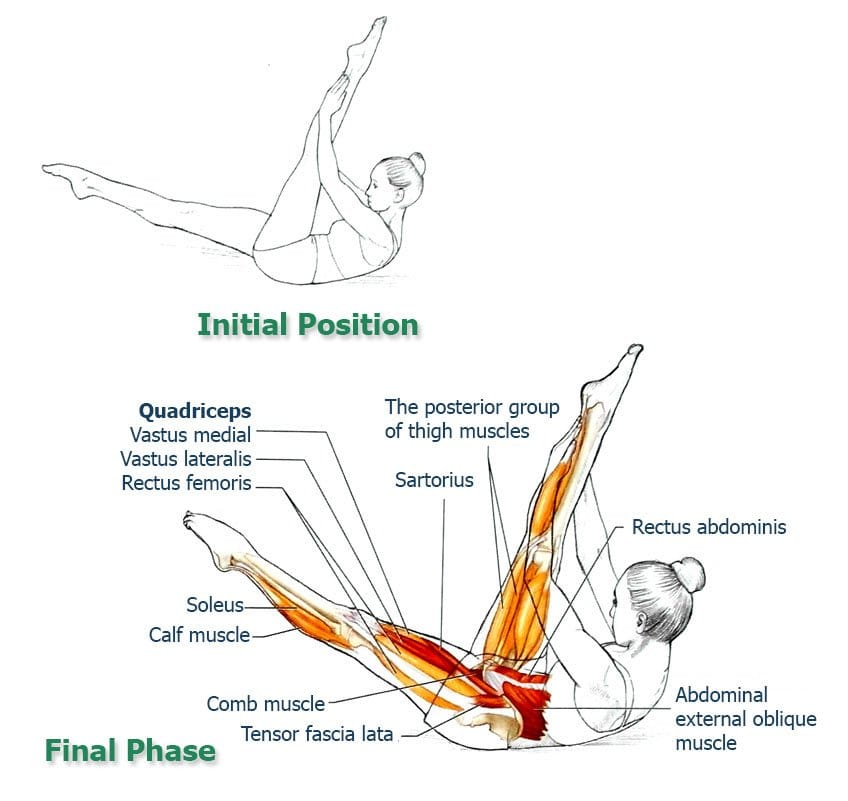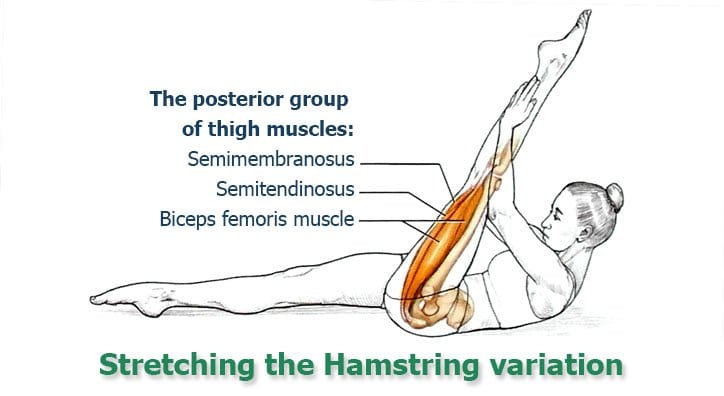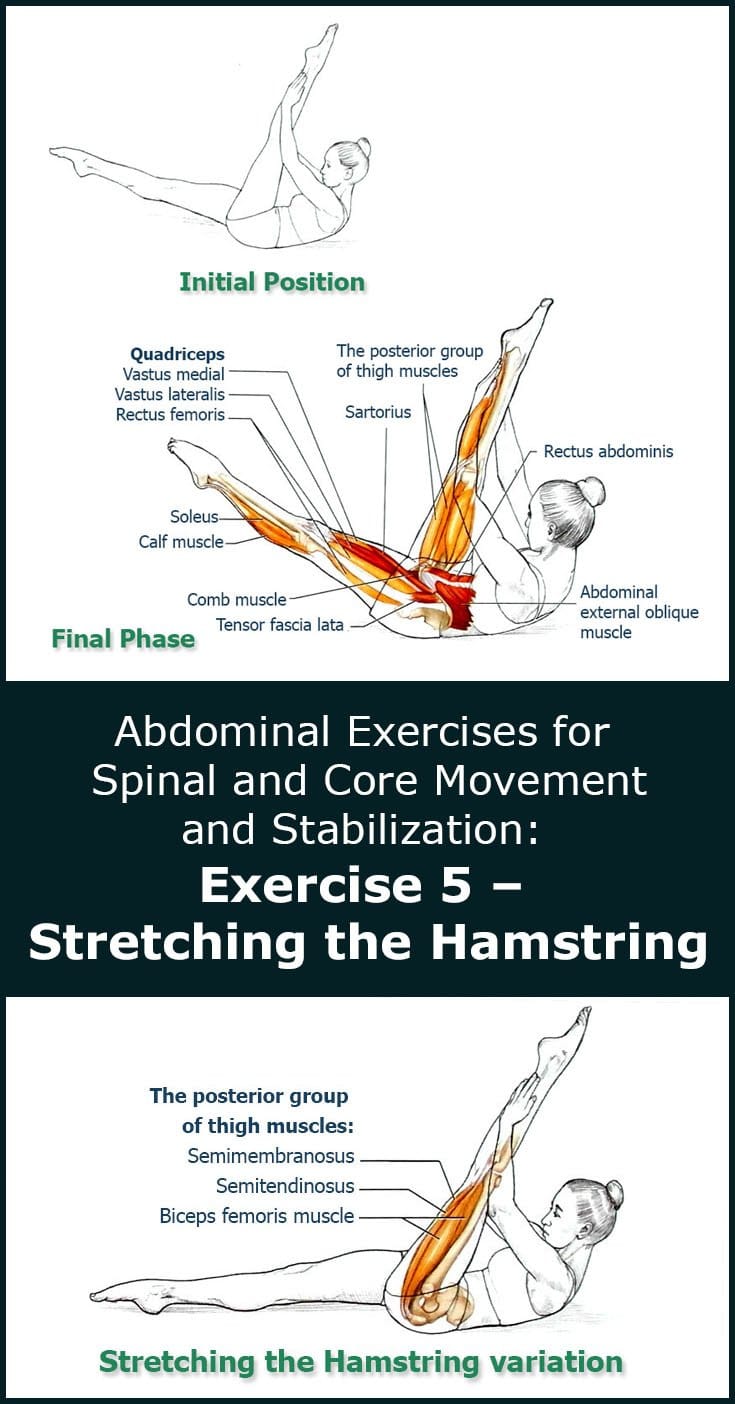In this program we focus on exercises for spine and core stabilization with a particular attention on the abdominal muscles. The hamstring muscle group plays an important part. It’s an area that can tighten up, affect your posture and spinal health and be overworked. Many individuals struggle with stretching the hamstring. The difficulty lies in postural habits, hamstring anatomy and the way we stretch.
The series so far:
- Exercise #1: Leg Circle
- Exercise #2: Roll-Up
- Exercise #3: Hundred
- Exercise #4: One Leg Stretch
- Exercise #5: Stretching the Hamstring (you are here)
- Exercise #6: Double Leg Stretch
- Exercise #7: Crisscross
- Final Exercise: Teaser
Today’s exercise, Stretching the Hamstring, is a necessary part of this program and is important for maintaining a good posture as well.
Exercise 5 – Stretching the Hamstring

Initial position. Lie on your back with the head and shoulder blades off the mat in a chest lift position and one leg lifted towards your head, both of your hands grasping it just above the ankle. The other leg is suspended above the mat at a height at which the lower back can maintain contact with the mat. Both knees are straight and both feet are gently pointed outward:
- Exhale and pull in the abdominals slightly closer toward the spine while pulling the top leg closer to the forehead with two gentle successive movements coordinated with two percussive exhales;
- Inhale and, without bending the legs, switch the legs moving your hands to the ankle of the opposite leg;
- Exhale and repeat the process for the other leg, pulling it closer in the direction of the forehead, with one percussive breath for each of the two movements. Repeat the sequence 5 times on each leg, for a total of 10 times, switching the legs on the inhale and stretching the muscle on the exhale. When finished, return to the initial position.
Make Sure You:
- In the starting position, firmly pull the abdominals toward the spine. Use a strong isometric abdominal contraction to keep the trunk lifted and the pelvis stable. At the same time maintain contact between the lower back and the mat (throughout the exercise), especially as the legs switch;
- While keeping core stability, fully straighten both legs. The knee extensors and the ankle flexors work to create the desired straight line of the legs;
- At the start of the 3rd phase, maintain the long leg line as you engage the hip flexors to raise the lower leg and the hip extensors to lower the upper leg. After the upper leg passes the vertical line, the hip flexors become key in controlling it as it lowers against gravity;
- In the 4th phase, focus on keeping the lower leg at a constant height as the top leg is gently pulled in toward the forehead. This creates a dynamic stretch for the hamstrings. Draw the top leg in using the shoulder flexors, with the elbows pointing to the sides;
- Try to maintain a neutral position of the shoulder blades rather than rounding forward or lifting up;
- Mental image: the leg switch should be performed with a brisk and sharp dynamic, like opening and closing scissors, with the motion isolated to the hips.
Additional Notes
Stretching the Hamstring is closely related to our previous exercise, One Leg Stretch, with the difference that now both legs remain straight. By keeping the upper leg straight while bringing it toward the chest we add a beneficial dynamic stretch for the hamstrings, which are often tight. Furthermore, lowering a straight leg requires more rigorous contraction of the abdominals to maintain stability of the pelvis and lower back.
Modifications
If the hamstrings are tight, you can lessen the tightness by moving the hands lower on the leg, or allowing the knee to bend slightly as the top leg is brought toward the forehead.

Variation
This exercise can be performed with the bottom leg lowered all the way to the mat as shown in the illustration below. This position can limit the posterior tilting of the pelvis, enhancing the stretch of the hamstrings on the top leg.


